Landlocked Serbia with no coastline, picturesque mazed rivers, varied terrain, and ageless mountains gives you an opportunity to explore the rich landscape.

Landlocked by Hungary to the North, Croatia, Bosnia and Montenegro to the west, Kosovo and North Macedonia to the South and Romania and Bulgaria to the east, Serbia is unique to the Balkan states.
Although Serbia has no coastline, it does have scenic rivers, a diverse terrain, gorges, rich soil and plains and everlasting mountains giving you an opportunity to explore the prodigious landscape that will leave you breathless. Hospitable culture, medieval architecture, stunning accommodation and truly affordable for your pocket.
Natural Resources
Did you know there are 583,183 hectares assigned to 460 natural resources, such as 17 nature parks, 5 national parks, 68 nature reserves, 309 natural monuments and 3 protected habitats? If you love hiking, and water and appreciate the true beauty of a country, this one is for you.

Content
- Is Serbia a Popular Tourist Destination
- Relief
- Chasing Rivers in Serbia
- 8 Tips on Sites Along the Danube River
- Drina River, a River of Temperament and Character
- Uvac River represents a Maze
- 8 Suggestions on What NOT to do in Serbia
- 4 Museums a must Visit: culture and history
- 12 Fun Facts about Serbia: did you know…
Is Serbia a Popular Tourist Destination
A large percentage of tourists do not know much about Serbia and their travels are more likely to venture to Croatia and Montenegro. Because of this, Serbia has held onto its authenticity and you will get a good feel of the local genuineness.
Relief
The relief is diverse and 30% of the country has forests. In the north, you find the Pannonian Plain, where numerous rivers crisscrosses, such as Tisza, Danube, Begej, and Tamiš. When you go south of the Danube, the area is mountainous and hilly.
Chasing Rivers in Serbia
Serbia has been gifted with abundant waters which result in fertile lands and man-made and natural lakes. If you are just coming to the capital of Serbia, Belgrade, pay a visit to the meeting of the Danube and the Sava rivers. There you will find a baronial fortress, Beogradska Tvrđava.
8 Tips on Sites Along the Danube River
It is the second-longest river in Europe after Russia’s Volga and runs through 10 different European countries beginning in the Black Forest region of Germany and meanders 2850 km till it reaches the Black Sea. In Belgrade, it is an amazing 5.5 km wide! Approximately 92% of the country lies within the Danube Basin.
Historical Tours
Traces of the Celts, Romans, Byzantium, the first Slavs, Otterman Empire, Austrian Empire, feudal Serbia and Hungarian states, including modern Serbia will be seen by the voyager on the historical tours.
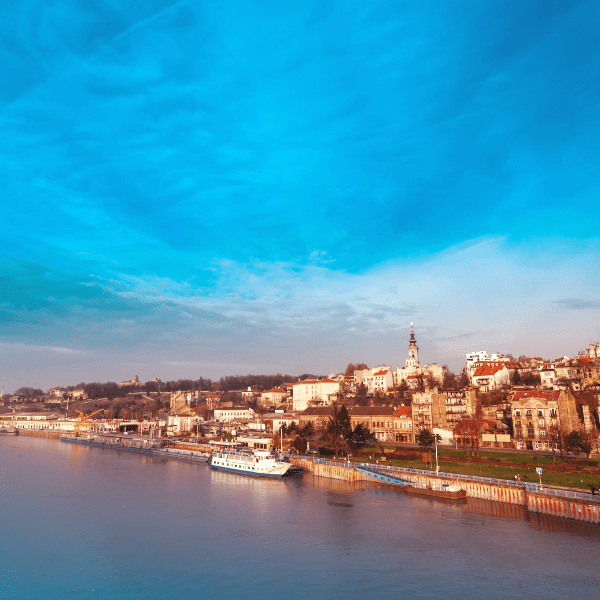
River Cruises in Serbia
When visiting Serbia, go on a river cruise with a professional guide. This will give you an opportunity to get to know the ancient history and also to see places that you would not easily find yourself.
1. Golubac Fortress
Visit the Golubac Fortress which is 4 km from the town of Golubac. The Fortress represented an important military border stronghold. It is not known when and who built the fortress but was mentioned that it was used as a fortification housing the Hungarian military garrison in 1335. Have a look at the actual website of the Golubac Fortress. Remember to switch to the English version.

2. Lepenski vir
“Lepenski Vir is an absolute “Must Do” if you are anywhere in the area. It was discovered quite by accident when the governments of Romania and Yugoslavia decided to build the Iron Gates Dam on the Danube. Archaeologists set out to see what was going to be buried by the ensuing lake which would be manufactured by the damming of the river. They came upon this village that is more than 10,000 years old (8000 years BCE!). Over 130 skeletons were discovered, basically intact! The entire village was able to be reconstructed and moved to higher ground so as not to be drowned. The Serbian government has built an exhibit centre around it so that it won’t be further destroyed. – fascinating!”
William P

3. The Iron Gates
The Iron Gates (Djerdap) National Park Gorge is the largest in Europe. It is also rich in flora and fauna and is a destination for hydrologists and archaeologists throughout the world. The best way to experience the Iron Gate is to take a cruise. You will visit the Tabula Traiana, an inscription carved in a rock on the bank of the Danube that is one of the many building feats of Roman Emperor Trajan. It is only visible from the water.

4. Miroč Mountains
On your cruise along the Danube, you will see the peak of the Miroč Mountains between the towns of Donji Milanovac and Tekijia in eastern Serbia. In Serbian legend, it is a mystical mountain, that grows magical herbs that will heal “haiduks” ( these are bandits or freedom fighters from the 17th to mid-19th century). The mountain is known for its animal life and the richness of honey, additionally, you will also find many hidden caves in the Miroč Mountains and the best way to explore these is with a guided tour.

5. Belgrade
Belgrade is the capital of Serbia and the largest city through which the Danube flows. This city has had 15 different names since the Celts founded it in the 3rd century BC. Belgrade has been in over 115 wars and therefore got the nickname “White Fenix”. Bombings wiped out many parts of the city during the 1st, and 2nd World Wars and again by NATO in 1999 and for this reason this unyielding city had to be rebuilt 44 times.

Belgrade Nikola Tesla Airport is the most significant airport. If you are coming in during the daytime, look out and you will see the Danube River and the tallest Eastern Orthodox church, the Church of Saint Sava. Construction of the church began in 1935, but further construction was banned by the Yugoslav communists after World War II, thereafter it rose again in 1985, the outside being completed in 2004. Only recently the interior was completed, as delays were created by COVID.

Belgrade is notorious for its nightlife. If you are like me and do not appreciate an all-nighter in a nightclub, go during the day to Strahinjića Bana Street, known for its street parties. Often referred to as ‘Silicone Valley’, due to the fact that many women dress to kill with silicone breasts and lips and seek a “sugar daddy”, markedly here you will find very posh restaurants and lovely cafes, but a vibe not to be missed.
6. Bačka Palanka
Bačka Palanka town is located in the South Bačka District of the province of Vojvodina. In the region of Bačka, numerous villages are found, mainly north of the Danube but some south. Yes, and if you are missing the sandy beaches, there are wonderful beaches, the most popular being “Town Beach” and “Tikvara”. Tikvara Lake is a Natural Monument and the surrounding areas of forests of soft deciduous trees, alongside the whole area are interlaced with the Danube estuaries and marsh areas.

7. Fruška Gora National Park

On the banks of the Danube lies Serbia’s largest national park. Only one and a half hours drive from Belgrade and only half an hour’s drive from Novi Sad. 16 monasteries remain out of the 35 that were originally built in the 15th to the 18th centuries however as a tourist, you can visit these 16 as they remain open to the public.
The monasteries were erected to save the Serbians from the Turks and for spiritual purposes. Try and visit these three.
Novo Hopovo

- One of the best-preserved, most important and largest
- Spacious church surrounded by dormitories
- Most beautifully painted monastery. Superbly painted iconostasis and frescoes mirror the effort of the talented baroque painter Theodore Kracun
Jazak

- It got its name because it is located between two hills, in a den (jazbina)
- Monastery held a grand reputation due to relics of Uroš the Weak which were brought here from Nerodimlje, during the Great Serb Migration
- During World War II it suffered a great deal of damage and theft occurred. Today it has been fully renovated and is under the care of the Sisterhood
Krušedol

- Situated in the Vojvodina region
- Founded between 1509 and 1514 by Saint Đorđe Branković
- It houses a large library, so many scholars used to stay at the monastery including the poet who is regarded as one of Serbia’s great minds, Lazar “Laza” Kostić. He was also a prose writer, lawyer, aesthetician, journalist, publicist, and politician
Do you relish wine tastings? If you have never done one read about “Tips to know before going on Wine Route Tours”. On the tours, you will sample supreme wines produced from domestic grape varieties, such as Skadarka and Neoplanta forthwith make sure you test bermet, a matchless kind of locally-produced aromatic dessert wine.
Taste
Very sweet and contains 15-18% of alcohol, so do not palate too much of it! The recipe remains a secret and has been passed on from local families through the ages.
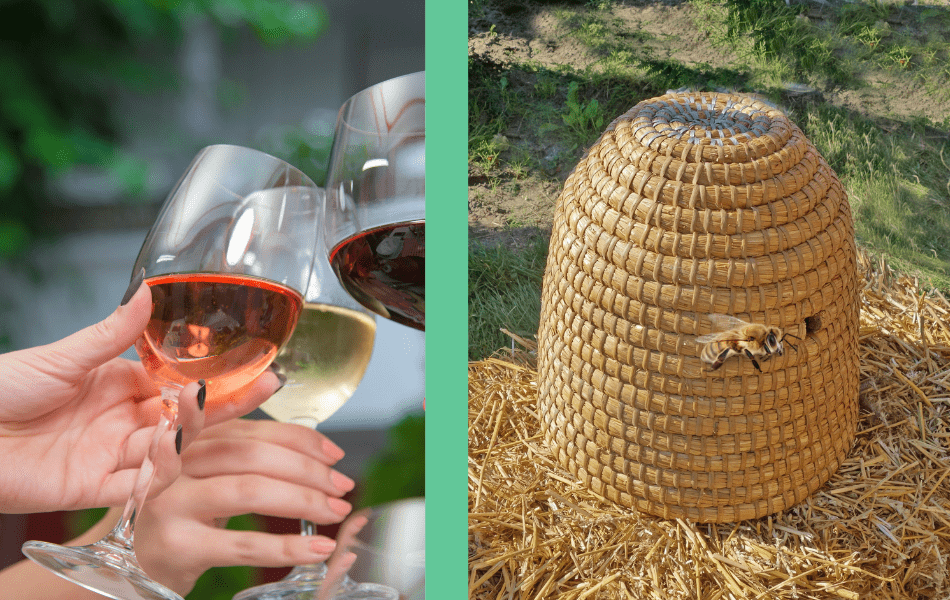
Hiking and Cycling
Hiking and cycling trails are spread across the national park. If you love the outdoors, there is so much to do and see. Banja Vrdnik Spa on the south slopes, where the inside and outside pools are filled with thermo-mineral waters, then view the lakes, especially Besenovac Lake, also known as Beli Kamen, which was created in 2004 from a surface mine. Stay at resort hotels and get a whole new wellness feeling from all the national park has to offer.
Have a look at the different hotels in the national park. They are fabulous!
8. Novi Sad – “new plantation” on the Danube

Thought-provoking Fact
Did you know the clock tower in Novi Sad has black dials on its four sides? The numbers are in Roman numerals, BUT the interesting fact is that the big hand on the clock shows the hours and the small one shows the minutes. Totally opposite to what we are used to. The reason was so the sailors on the river Danube could see what time is it from a great distance. Also, hours were very important for the shifts of the guards on the Fortress

- Novi Sad is the capital of the Vojvodina province and 2nd largest city
- Albert Einstein’s brilliant wife Mileva Maric came from Novi Sad and their two sons – Albert Junior and Eduard were baptised in 1913, in the oldest and prettiest church, the Nikolajevska Church
- You find pedestrian streets, colourful buildings (the best is Dunavksa Street), many restaurants, sidewalk cafes, more captivating architecture and a collection of churches and squares
- The most famous landmark, the second-largest fortress in Europe, is the Petrovaradin Fortress. It took 88 years to complete from 1692 to 1780 and has 16km of underground tunnels. You can explore 1-2 km of the tunnels with a tour guide
- Go on a free donation-based tour which begins at the National Theatre and ends at the fortress, while viewing the highpoints
- Novi Sad was named in 1748 by Maria Theresa’s proclamation
- Take a stroll through the picturesque urban park Danube Park
- Liberty Bridge, the largest bridge in Novi Sad, was completed on 7 October 2005 as it had to be rebuilt after a rocket struck it at 7.55 pm on 3 April 1999 during a NATO bombing campaign. New Zezelj’s Bridge which is also known as the Bridge of Brotherhood and Unity was also destroyed during the 1999 bombing. This also applied to the Varadin Bridge which had to be rebuilt. Some bridges created are works of art, but if bridges have been rebuilt, their history is just as fascinating as the art
“A good deed is the best form of prayer.”
– Serbian Proverb
Drina River, a River of Temperament and Character

Floating Houses
On River Drina
Hydroelectric Plant
On Drina River

Today the Drina is the border between Serbia and Bosnia and Herzegovina. It pushes its way through mountain ranges, creating gorges and then suddenly it quietens and enters a valley, resulting in the Lim River uniting with the Drina just before Serbia and the force created the large Medjedjanska gorge. Thereafter, it reaches the 38 km long Klotijevačka Gorge, which is its largest. The usually green colour of the Drina is known by the locals as “Zelenika”, which means green river.
Perućac lake
Meandering from the gorge its partial destination where it rests momentarily is the man-made lake Perućac lake. Tara Mountain standing virtually vertically keeps watching over the waters. Here you can swim, fish (remember to obtain a licence at the lake) or kayak, take a tour boat across the lake or just relax on the beach and relax at Lakehouse Perućijana.
Past City Loznica
Once it escapes from the lake, it twines down past scenic landscapes to the city Loznica where it relaxes and joins into the river Sava, pretending to be a calm and relaxed entity.

Drina House – how arb!
The most iconic wooden house, sits in the middle of the Drina River, near the city of Bajina Basta. Young friends needed a place that was private where they could swim and sunbathe, so they decided to build this wooden house. They took wood from an old warehouse and managed with canoes and floating larger pieces with the currents to the rock where they assembled this house thus it was constructed in 1968.
From late spring till summer, don’t miss the regattas! Trumpets, socializing and side concerts are part of these crazy parties.

“A good reputation is better than golden clothes.”
– Serbian Proverb
Uvac River represents a Maze
My love of nature brings us to the Uvac River which is forever meandering through the canyons. In the southwest of Serbia, 250 km from Belgrade and 119 km long.

Birdwatching
As a birder, the Uvac River is paradise! Spot the protected “Griffin Vulture” which is seen above the Uvac River Gorge, and where photo-safari programs draw in numerous visitors. 172 different bird species can be found in this region, including species such as Wallcreeper, Black Vulture, White-tailed Eagle, Goosander, Kingfisher, Eagle Owl, Golden Eagle, Short-toed Snake Eagle and Nutcracker. The best time to go birding in this area is spring.
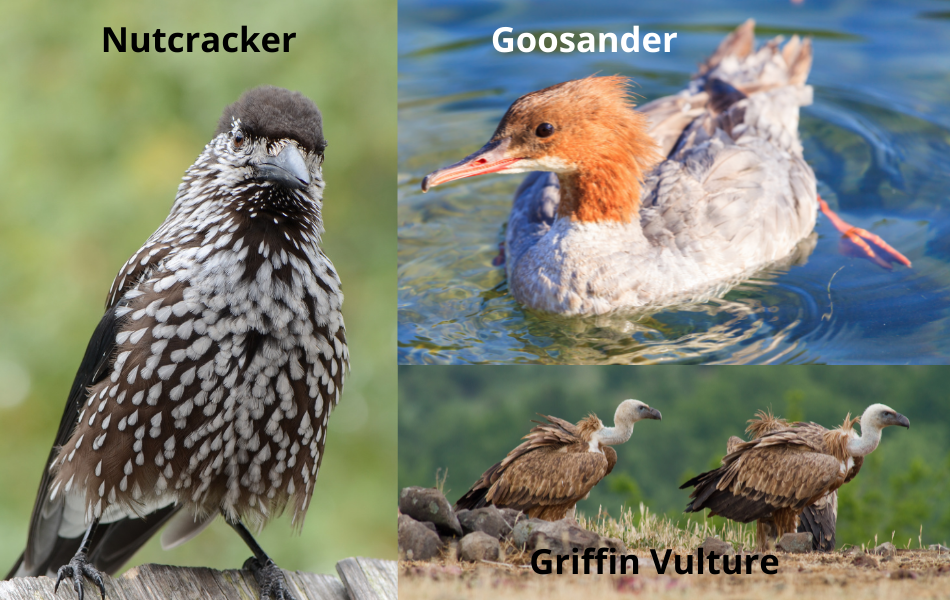
Caves
Be an adventurer and explore the cave systems along the river edges. Three well-known cave secrets and explored caves are the Ice cave, Tubića cave and Usak cave in the village of Usak.
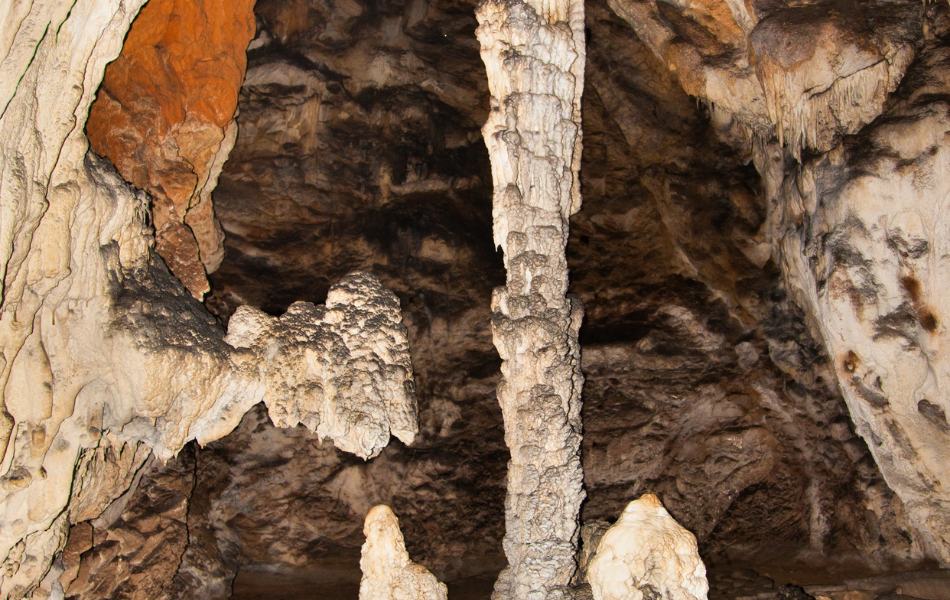
To give you a true feel of this incredible river, view this YouTube video created by Helivideo. Magnificent!
8 Suggestions on What NOT to do in Serbia
The Serbians are an exceedingly friendly and hospitable nation. To make your stay extra pleasant, wise not to do the following:
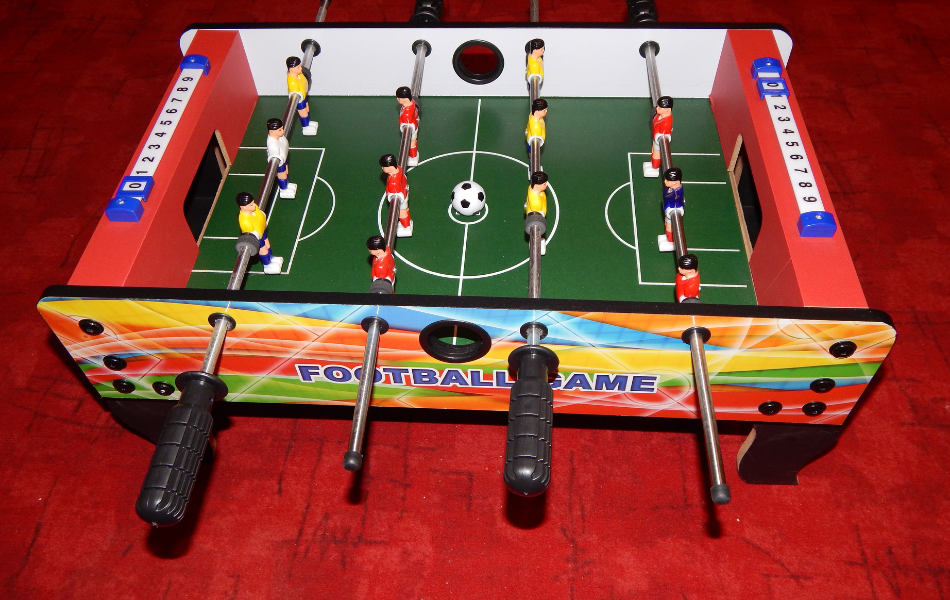
- Don’t photograph the ruins. Resist taking that selfie
- Sitting on a corner of the table will encourage many superstitious Serbs to believe it will bring you bad luck
- Be sensitive to what the Serbs have been through and do not mention politics or Kosovo
- Hailing a cab can be very expensive. Use a registered taxi. The number plate will end in TX. If it doesn’t it will be a bad pocket experience
- Love vegetarian dishes? Don’t expect many of these to be around
- Be in Serbia in July! Musicians from around the world are there. If you love music, July is the month
- Do not talk football! Do not wear a football shirt or cap! It will be the wrong one. The two most popular soccer teams are Partizan and Crvena Zvezda (Red Star). You will not win in any football argument – AVOID IT
- Respect your host and do not forget to take your shoes off when entering their home – even if they tell you you do not have to, do it
“Jealousy and fear have big eyes.”
– Serbian Quote
4 Museums a must Visit: culture and history

What is your motivation to travel? Just to have a good time or to also understand the people, their history, the language, their successes, experiences and passions?
The Serbians have been through so much, yet they remain friendly and accommodating. Have a better empathy for where they have come from and you will gain a new respect for the populace. There is no better way to do this than to visit the museums the country has to offer, for this reason, educate yourself and expand your own knowledge. There are about 100 museums to choose from, whereas I am just mentioning a few.
Did you know that 18 May is International Museum Day?
1. National Museum of Belgrade

Prince Mihailo (Knez Mihailo)
Prior to entering the National Museum of Belgrade, take a moment to observe the statue of Prince Mihailo (Knez Mihailo). Mihailo recognized himself as an elected prince in 1842 because due to the rebellion, he was forced to leave Serbia 6 years later he returned and set up an army of 50 000 with the aim of achieving the final liberation of Serbia from the Turks. The pedestal reflects the history of towns, during his reign, which he recaptured from the Turks.
Oldest Museum in Serbia
The descriptions in the museum are also in English, so don’t rush, take time to observe and read. Give yourself approximately two hours to go through the museum and with this in mind, it is the oldest and most important museum in Serbia.
Reflection of Change
How does one exhibit such changes that have been reflected over the last 20 years? Judge for yourself. Is this well represented in the museum? If you have only time to view one museum, this is the one you should take the time to see.
2. Museum of Illusion

Have some fun! Illusion means a “deceptive appearance or impression,” which reflects a Mirage, Delusion, or Illusion that makes you believe that what you are seeing is real, but actually, it is not, it is really unreal. Come get your brain confused, encounter the impossible and get educated all at a different angle. The Museum of Illusion is worth the visit!
3. Museum of Science & Technology

Walk back into the timeline of Serbia’s discoveries in science, medicine and technology history. You will learn a great deal and find yourself saying: “Oh I remember that!” or “Wow, I didn’t know that”. Going through is fascinating and will take you about 1 to 2 hours walking through the Museum of Science & Technology.
4. Nikola Tesla Museum

I even had heard the name Tesla before my interest in Serbia began. My husband who is a boffin in electrical and industrial electronics fully understands how much Nikola has done in discovering new inventions. Inventor as an electrical engineer, mechanical engineer, physicist, and futurist and how much his discoveries have influenced the world. A brilliant man who never gave up.
Patents and Fame
He obtained around 300 patents worldwide for his inventions. His first autobiography which was published on 5 June 1915 devours my interest. Tesla was admired by numerous esteemed pioneers of science, Albert Einstein being among them. Most certainly pay this museum a visit!
“The morning is wiser than the evening.”
– Serbian Proverb
12 Fun Facts about Serbia: did you know…

| 1. Milunka Savic was a heroine of the Balkan wars. Did you know she pretended she was male and fought in the wars? Born in Serbia in 1888. Her brother was called up and she went in his place. She was an admirable soldier and become decorated and moved through the ranks quickly. Only when she was injured in battle and had to be admitted to the hospital was her gender discovered. | 7. There is a river that is 365 metres long and do you know what it is called? Year! |
| 2. Did you know the largest gorge in Europe is in Serbia? It is called the Derdap Gorge. | 8. The first vampire was not actually Dracula, it was Peter Blagojevic, from Serbia. |
| 3. Can you believe that three Serbian nationals took part in the first moon landing? | 9. When in Serbia you will notice that most names end in “ic”. |
| 4. 70 different species of mammals are found in Serbia including the grey wolf and brown bear | 10. There are only 3 venomous snakes found in Serbia. |
| 5. Pule, made in Serbia, is the most expensive cheese in the world and is made from donkeys’ milk. It can cost anything from $600 to $1000 dollars. | 11. The official currency is the Dinar. |
| 6. Gibanica is one of the most popular foods widely considered to be a national dish. | 12. Did you know Serbia was responsible for almost 95% of the world’s raspberries and one of the world’s biggest exporters? |
“The wound heals, the scar remains.”
– Serbian Proverb
Have you been to Serbia? If you have let us know in the comments below, what you enjoyed most and if you haven’t, what would you love to see and do in Serbia?
Recent Posts
Discover insider tips to find cheap flights from the UK, save on easyJet, Ryanair & BA, and score the best weekend and last-minute deals. Why You’re Paying Too Much for Flights Most UK...
Discover the sounds of travel, from laughing kookaburras to market chatter, church bells to ocean waves - a journey heard as much as seen. It always starts with a sound. The other day, walking...

